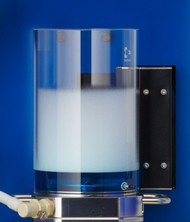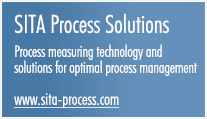|
The SITA FoamTester analyses the characteristics of surfactant-containing liquids easy, fast and precise with automated measuring sequences.
• Fully automated foam analysis • Precise reproducible foaming • Measuring foam and liquid volume • Analysing foam structure • Automated cleaning
|
 |
|||||

Analysing foam parameters, Controlling surfactant effects
The new generation SITA FoamTester
20 years of experience meets the needs of innovative foam testing
Overview of automated SITA foam testing
| The automated foam testing with the SITA FoamTester offers an efficient evaluation of surfactant containing liquids to analyse numerous influence factors on the foaming behaviour. | ||
|
Functionial components of the SITA FoamTester |
||
| Development and application tasks can be easily simulated by the comfortable sample handling with the temperature-controlled sample reservoir and measuring vessel, by the automated cleaning system as well as by the fast and free creation of experiments in the software. | ||
 |
||
|
Benefits of automated foam testing |
||
| • | Autonomous repetition of test runs without intervention by the user | |
| • | Immediate statements about the reproducibility | |
| • | Fast and easy screening of test and sample parameters | |
Foam creation
|
Foaming of the sample by stirring with the proven SITA method |
||
| • |
Use of the established SITA standard stirring disc which has been developed for a reproducible and application-oriented foam creation under mechanical pressure
|
|
| • |
Removable measuring vessel with stirring unit
|
|
| • |
Differentiation of various sample preparations by adaptable stirring parameters: speed, duration, acceleration, direction, intervals |
|
Measuring principle
|
Two optical, contactless measuring systems for the determination of foam and liquid volume as well as foam structure |
|||
| • |
Measuring system Foam Surface Scanner Determination of the foam topography and the resultant total volume by the structured-light method which reproduces the topography of the foam three-dimensionally by using projection and detection of various stripe patterns |
||
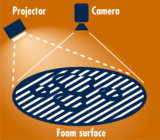 |
 |
 |
|
| • |
Measuring system Foam Interface Scanner Determination of the liquid level and the foam structure in the measuring vessel by using the total reflexion with a camera system including a line scan camera and an integrated lightning assembly |
||
 |
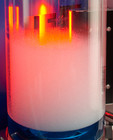 |
 |
|
|
Recording of the foam structure over the range |
|||
| • | Combination of both measuring systems for the automatic determination of the foam volume | ||
| • | Analysis of clear and cloudy liquids | ||
| • | All measurements in the same measuring vessel, connected to the thermal circuit | ||
Analyse foam and understand foaming
 |
||
| • | Convenient evaluation of measuring data with the software SITA-FoamLab in the office | |
| • |
Complete transparency of the measuring progress and the results by intuitive visualisation |
|
| • | Analysis of the slope and the resulting volume during foam formation | |
 |
||
| • | Analysis of the foam decay and the drainage | |
 |
||
| • | Analysis of bubble sizes and shapes in the foam structure | |
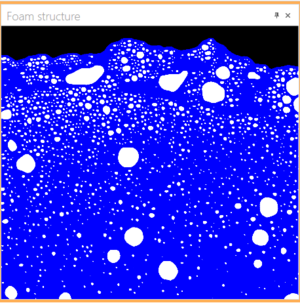 |
||
| • | Comprehensive characterising of foam and foaming | |
| - | By the determination of further parameters such as half-life period and foam density | |
| - | By the individual height-dependent evaluation of foam structure parameters such as average bubble size or circularity index | |
| - | By tracking time dependent changes in the foam structure | |
| - | Flexible comparison by clear display of different measuring sequences | |
| - |
Easy export of data and results for documentation
|
|
Applications
|
Optimisation of surfactant containing products in |
||
| • | Product Development | |
| • | Raw material development and selection | |
| • | Product processing and application | |
| • |
Quality and process assurance |
|
|
Application examples |
||
|
Cosmetics |
||
| • | Influence of the formulation and raw materials on foaming behavior | |
| • | Foam stability of toothpaste and foam baths | |
| • |
Foam structure as a reference point for user perception |
|
|
Cleaning agents |
||
| • | Influence of temperature on the foaming of spray cleaners | |
| • |
Influence of contaminations on the foaming in cleaning baths |
|
|
Cooling lubricants |
||
| • | Influence of water hardness on aging process | |
| • | Durability of defoamers | |
| • |
Optimisation of the filtration process to prevent foaming |
|
|
Inks, paints and coatings |
||
| • |
Effectiveness of defoamers |
|
|
Liquid processing industry |
||
| • |
Foaming behaviour of flow suspension in paper industry |
|
| • | Recipe optimisation to reduce foaming in bottle filling of beverages | |
| • | Adjustment of foaming production auxiliaries in textile manufacturing | |
| • |
Foaming effects of polymers in plastic production |
|
Technical data
| Foam creation |
|
| Recommended sample volume | (200 ... 500) ml |
| Usable measuring vessel volume |
1,500 ml (incl. foam) Dimensions: |
| Capacity of sample reservoir |
2,000 ml |
| Sample tempering of measuring vessel and sample reservoir |
(0 ... 60) °C using a optional thermostat |
| Stirring speed | (0 ... 2,000) U/min (bidirectional) |
| Adjustable stirring programs | speed, duration, direction, acceleration |
| Analysis of foam volume (foam creation and decay) | |
| Measurement values |
total volume, foam volume, liquid volume |
| Evaluated parameters | max. foam volume, foam half-life, flash foam |
| Measuring range total volume | (0 ... 1,500) ml; resolution 1 ml |
| Measuring range liquid volume |
(0 ... 500) ml; resolution 1 ml |
| Analysis of foam structure |
|
| Parameters | number of bubbles, bubble size distribution, average bubble diameter, circularity index |
| Evaluation area | height 130 mm width 50 mm |
| Resolution | 3,200 dpi |
| General data | |
| Rinse connection | 3/4“ (2 ... 6) bar |
| Operating temperature | (10 ... 40) °C |
| Power supply | (100 ... 240) V / (50 ... 60) Hz, 300 W |
| Dimensions (HxWxD) | (770 x 450 x 305) mm |
| Weight | approx. 35 kg |
| PC interface |
Ethernet
|
Optional: External laboratory devices for sample conditioning
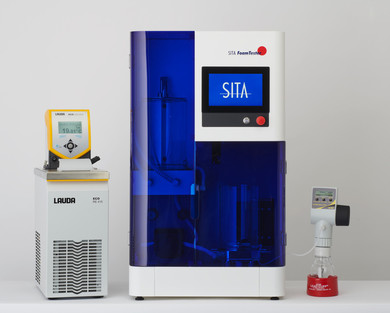 |
|
| • | Extension of experiments by additional functions for sample conditioning |
| • |
Automatic integration and direct control within the test sequence
|
|
Automatic dispenser CAT Contiburette μ10D |
||
|
for the dosage of liquids Resolution: 10 µl Dosing speed: 0,2 - 20 ml/min |
 |
|
|
Thermostat Lauda ECO RE 415S |
||
|
for cooling and heating of sample liquids Temperature range: (-15...200) °C Ambient temerature range: (5 ... 40) °C |
 |
|
|
Thermostat Lauda ECO E4S |
||
|
for heating of sample liquids Temperature range: (room temperature...200) °C Ambient temerature range: (5 ... 40) °C |
 |
|
Previous model SITA foam tester R-2000
|
The previous model SITA foam tester R-2000 is no longer available. If you have any questions concerning your existing device, please contact us directly. |
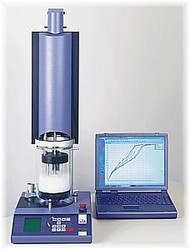 |
 |
| The market launch of the SITA FoamTester is supported within the scope of the German development programme "Market launch of innovative products and product design". |



